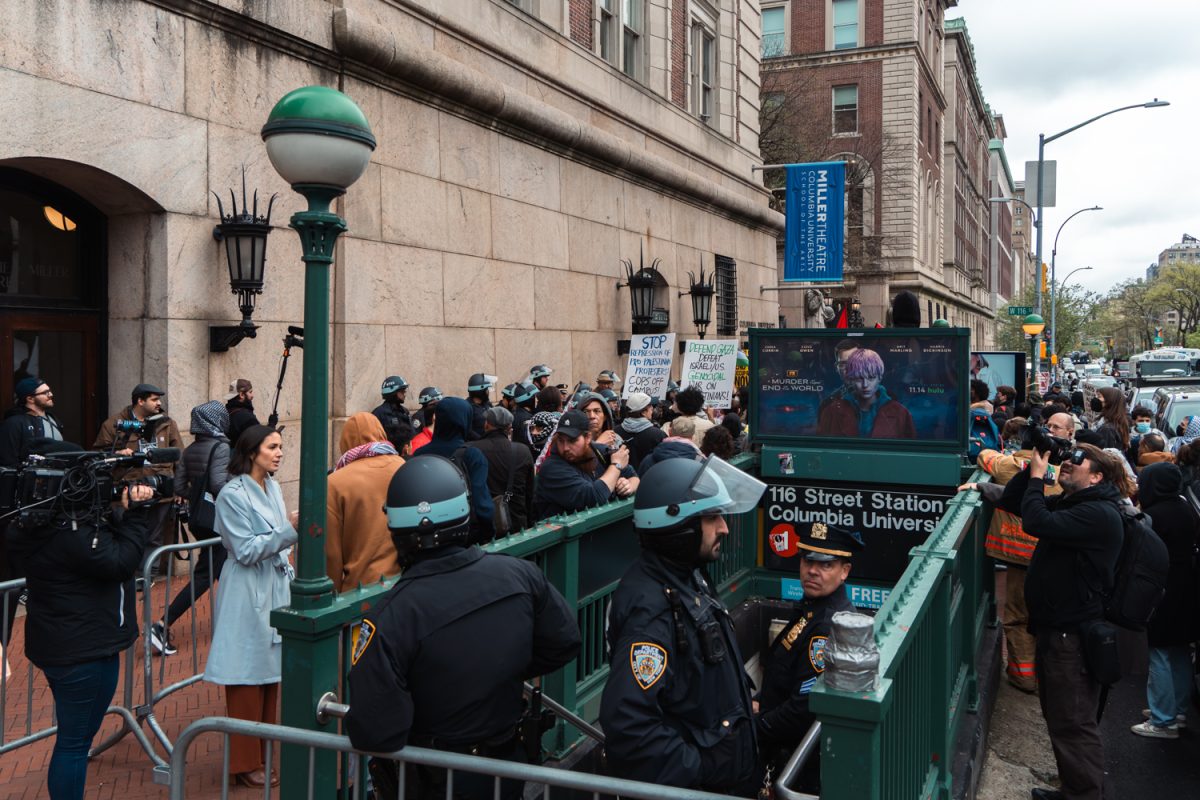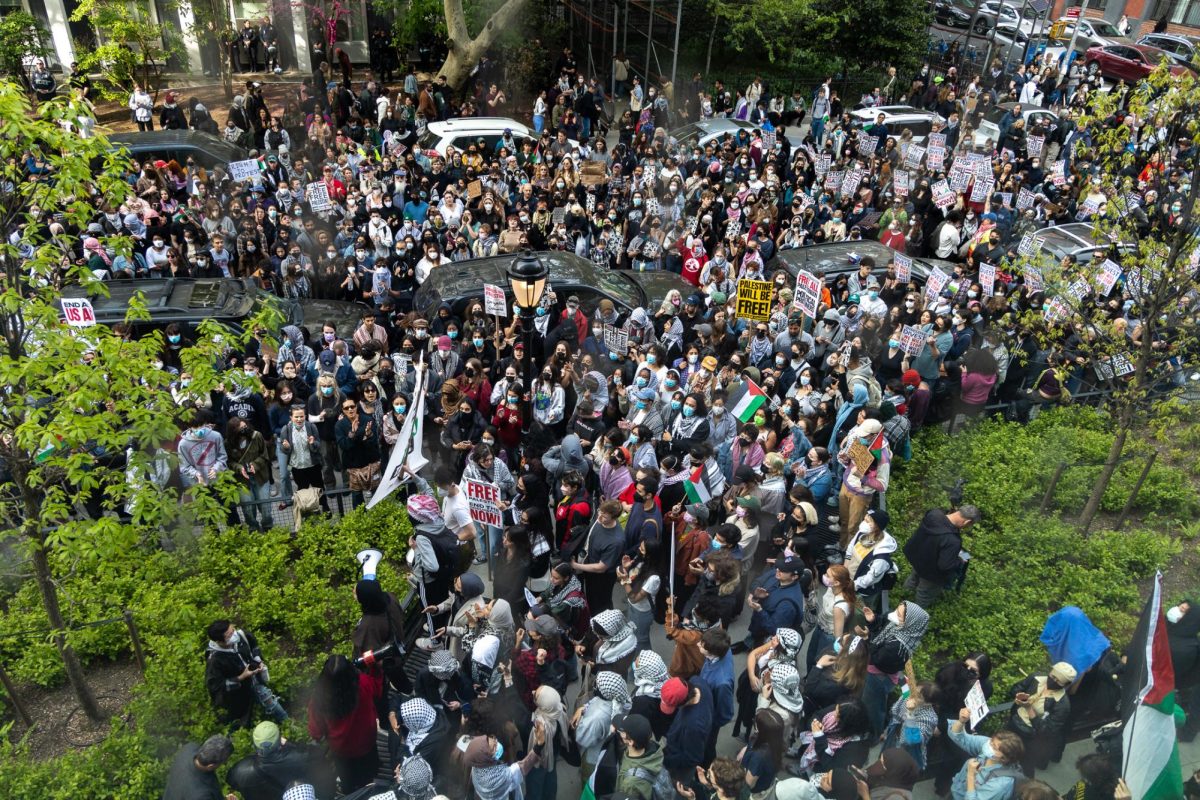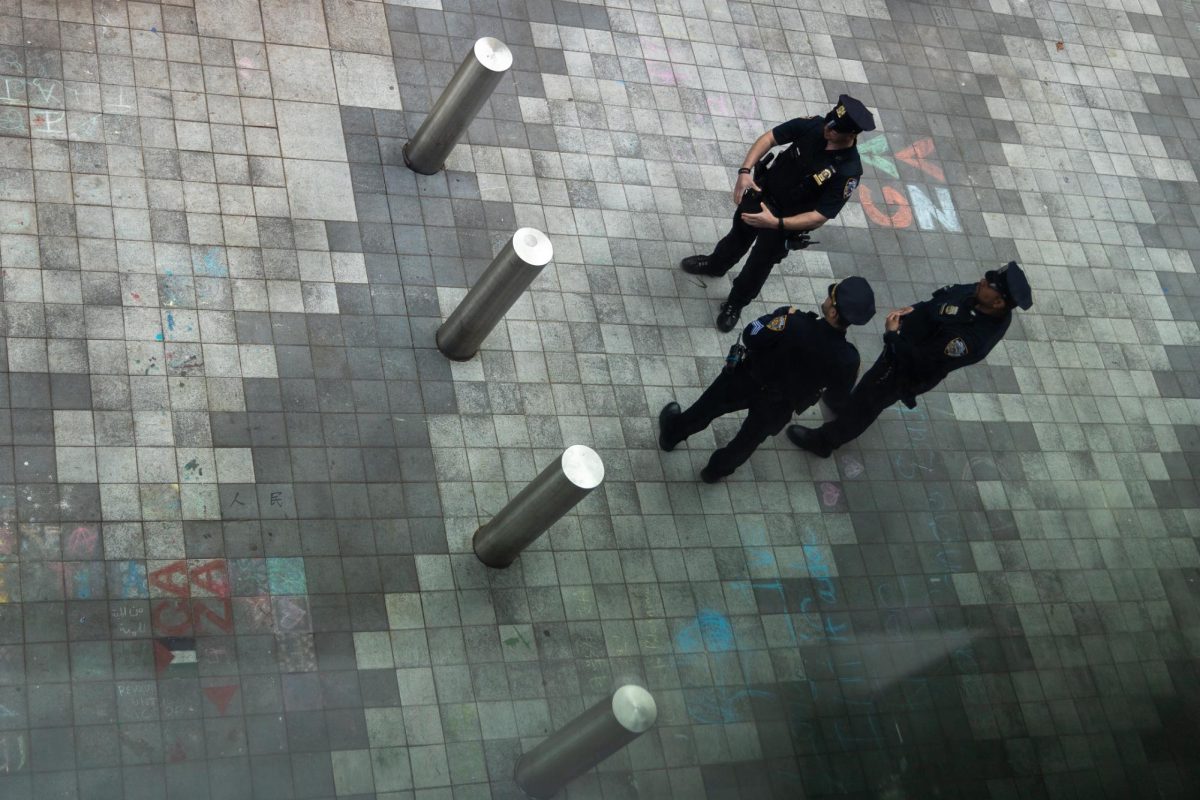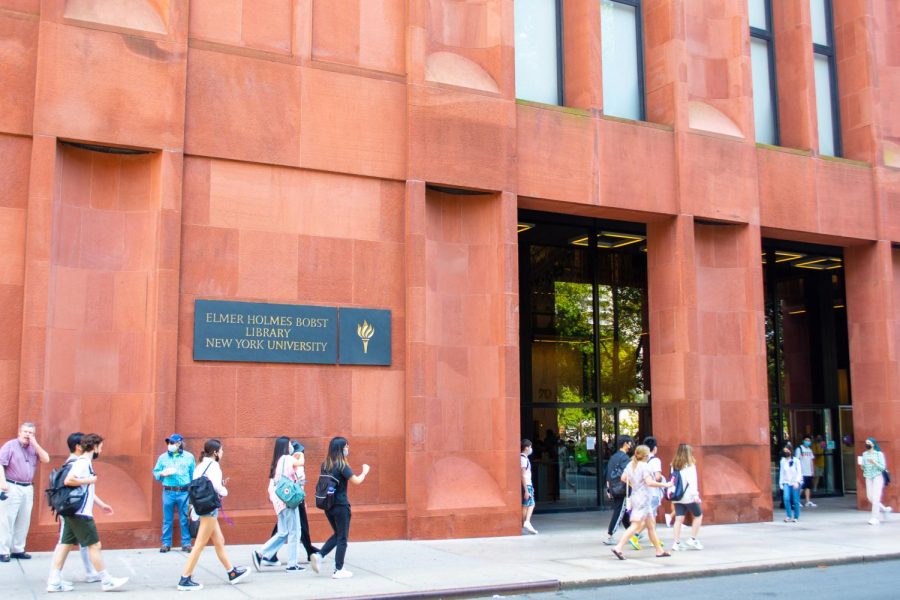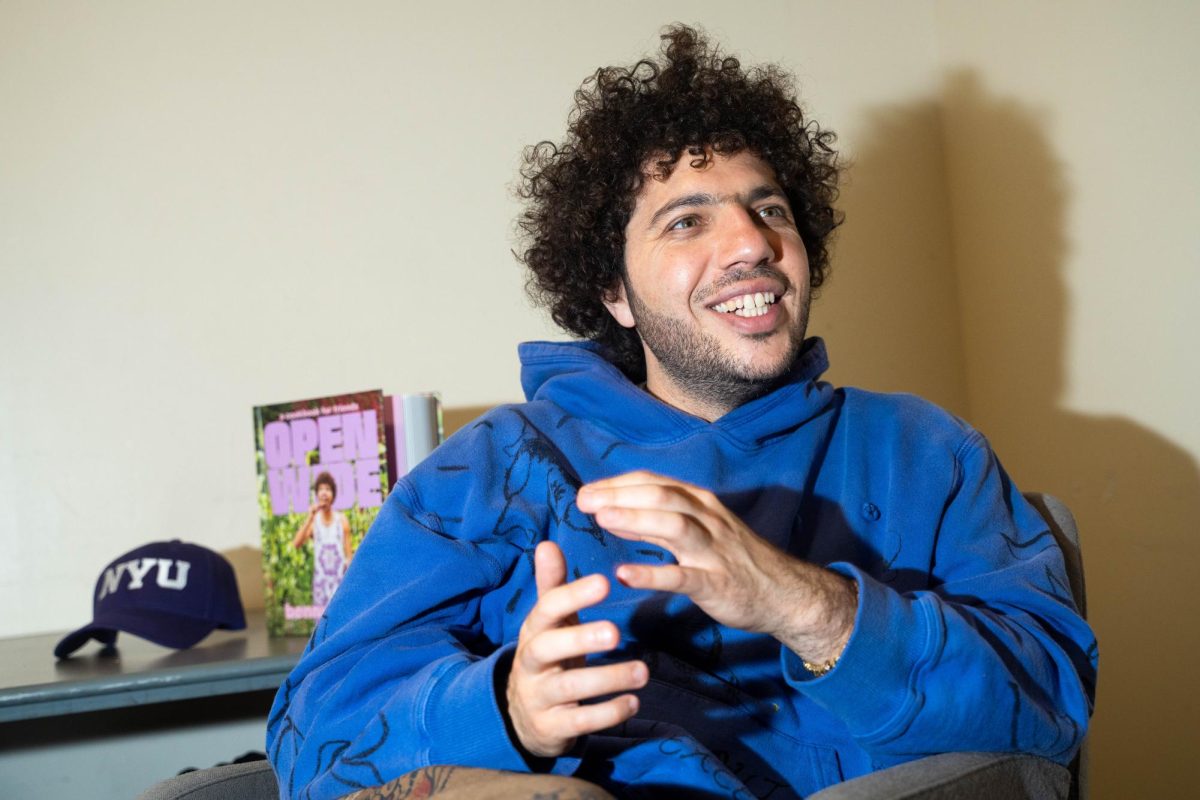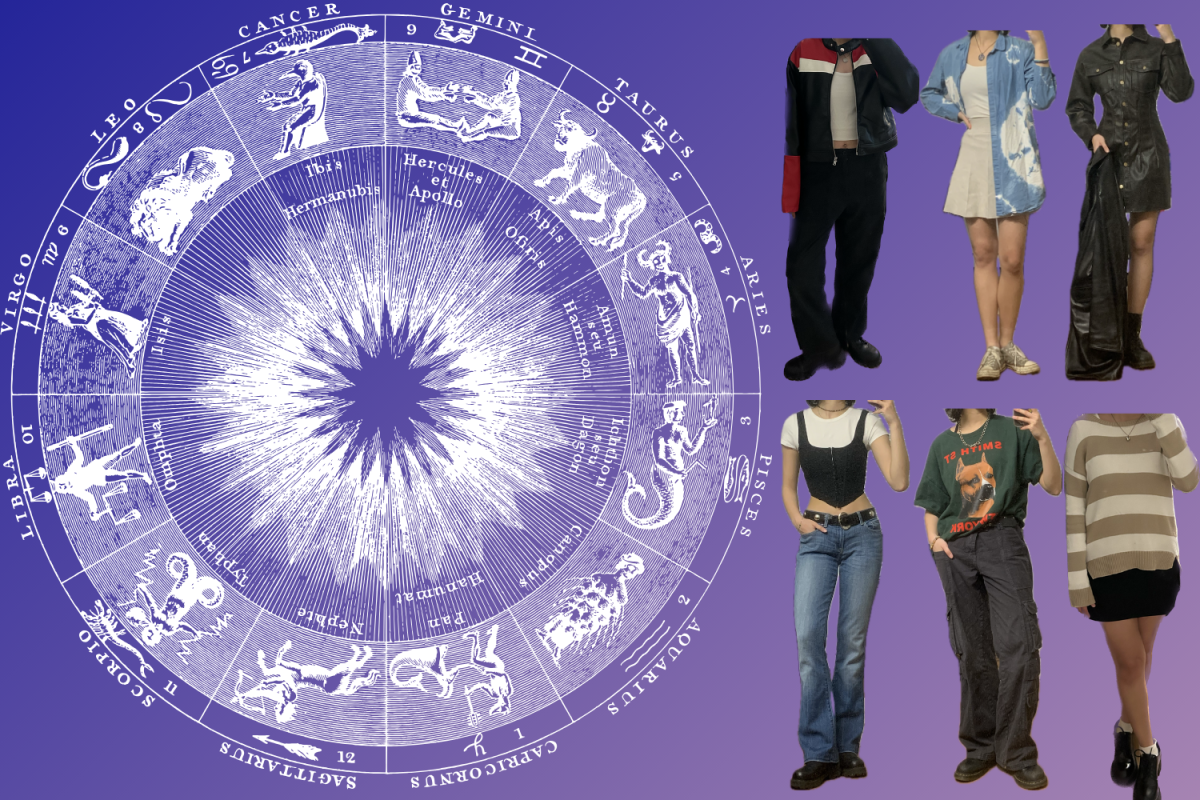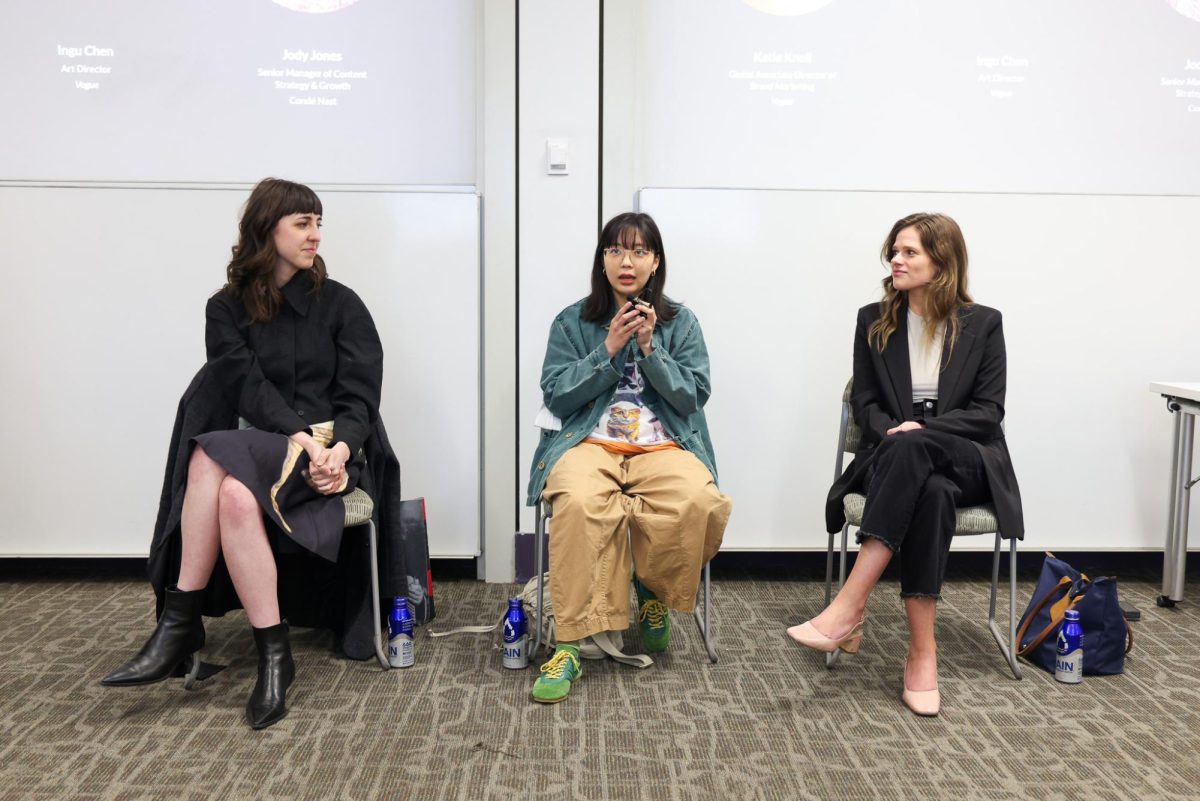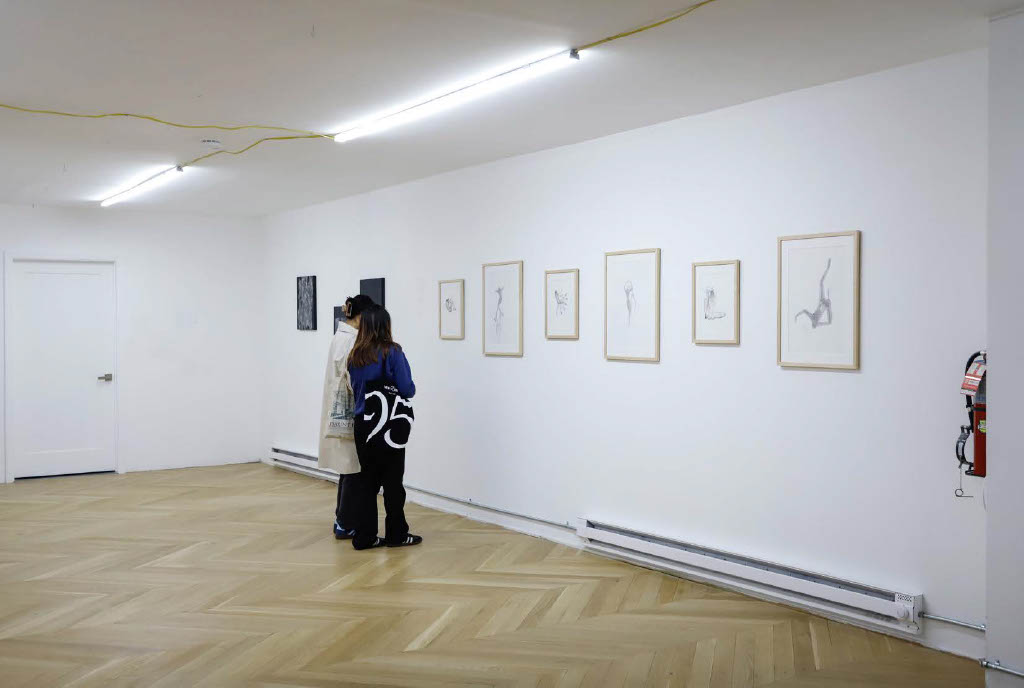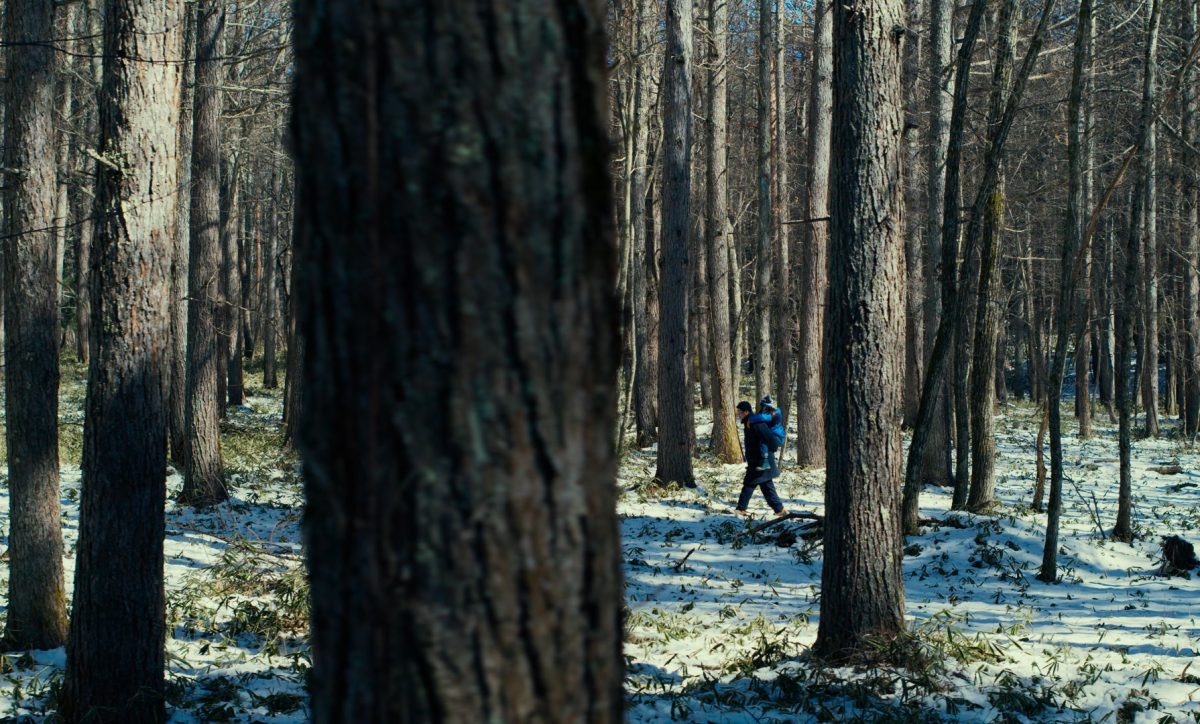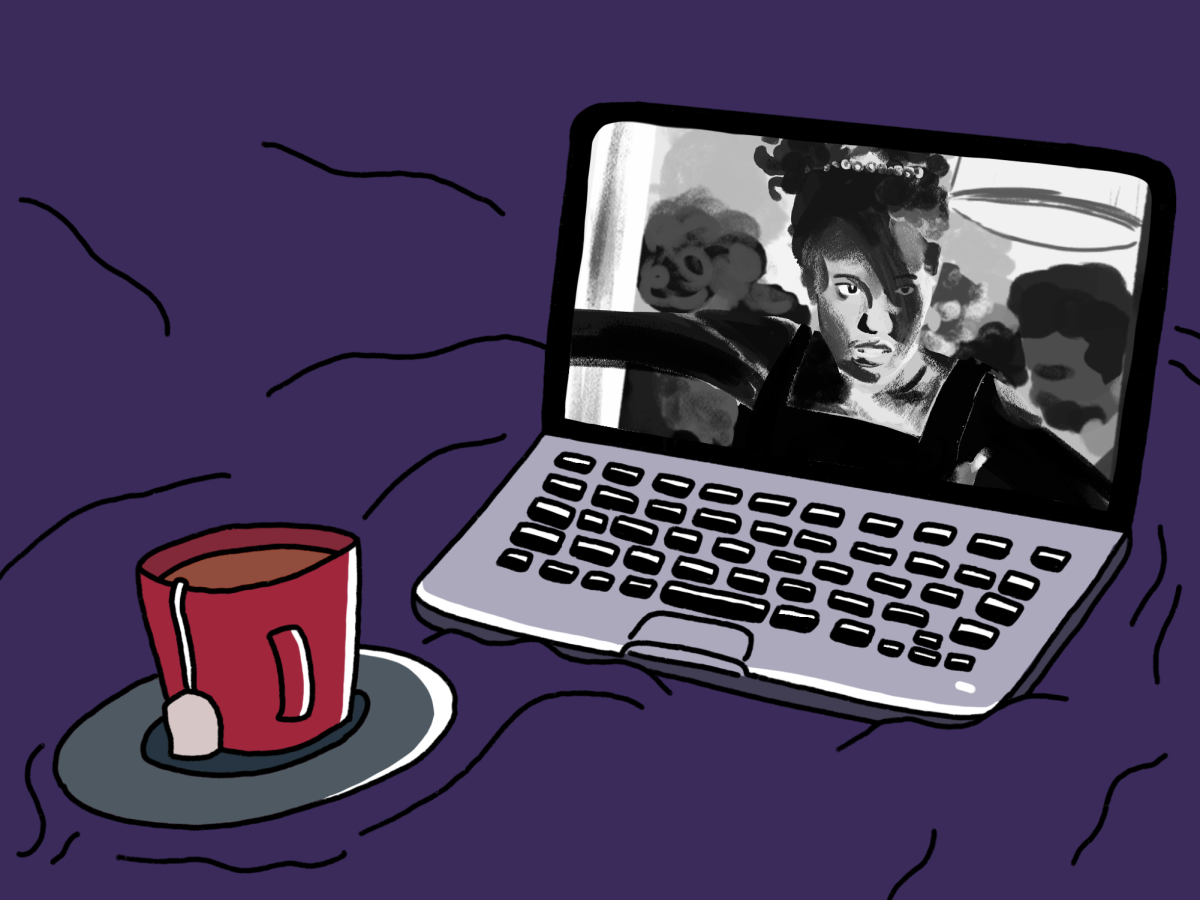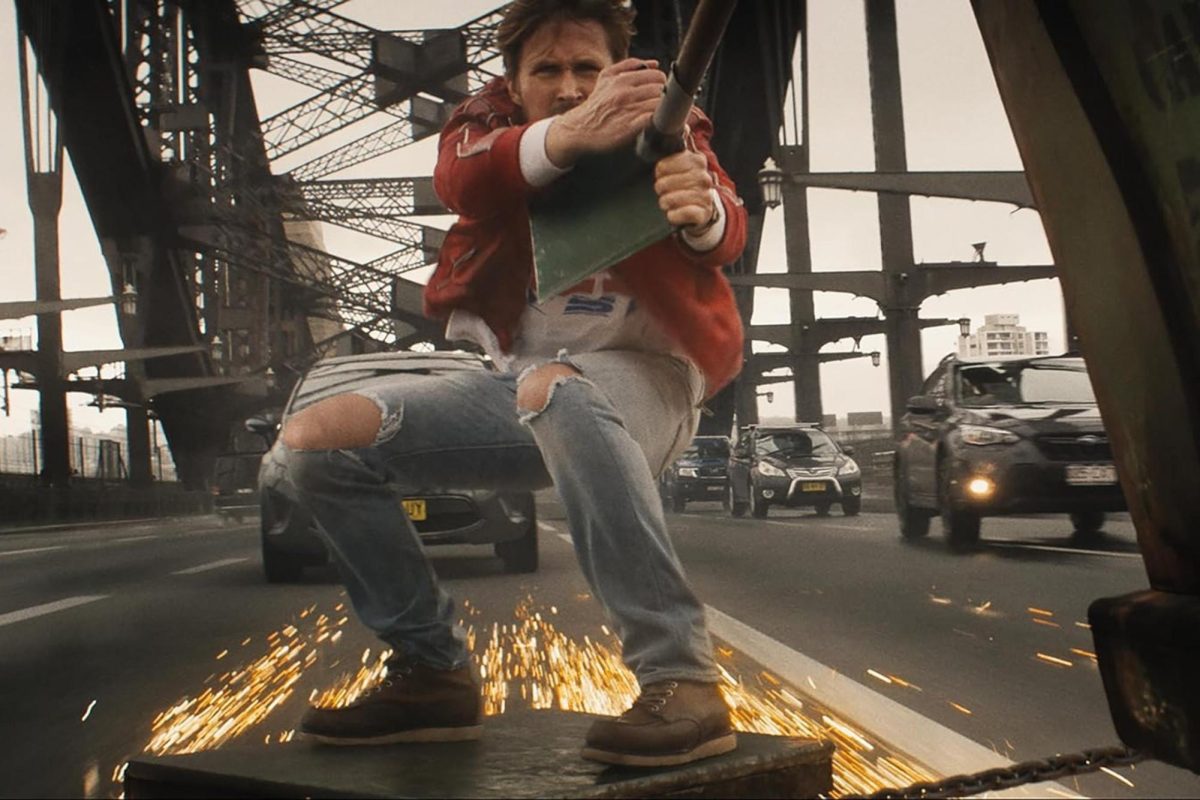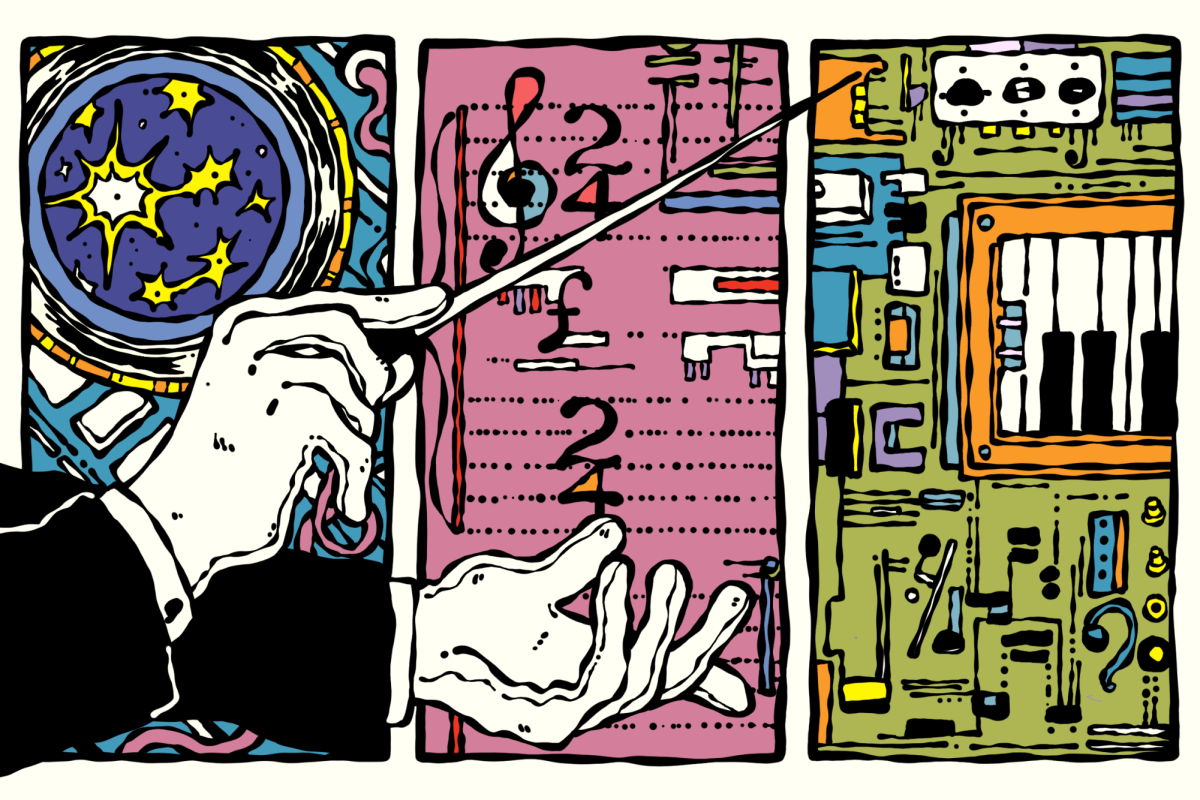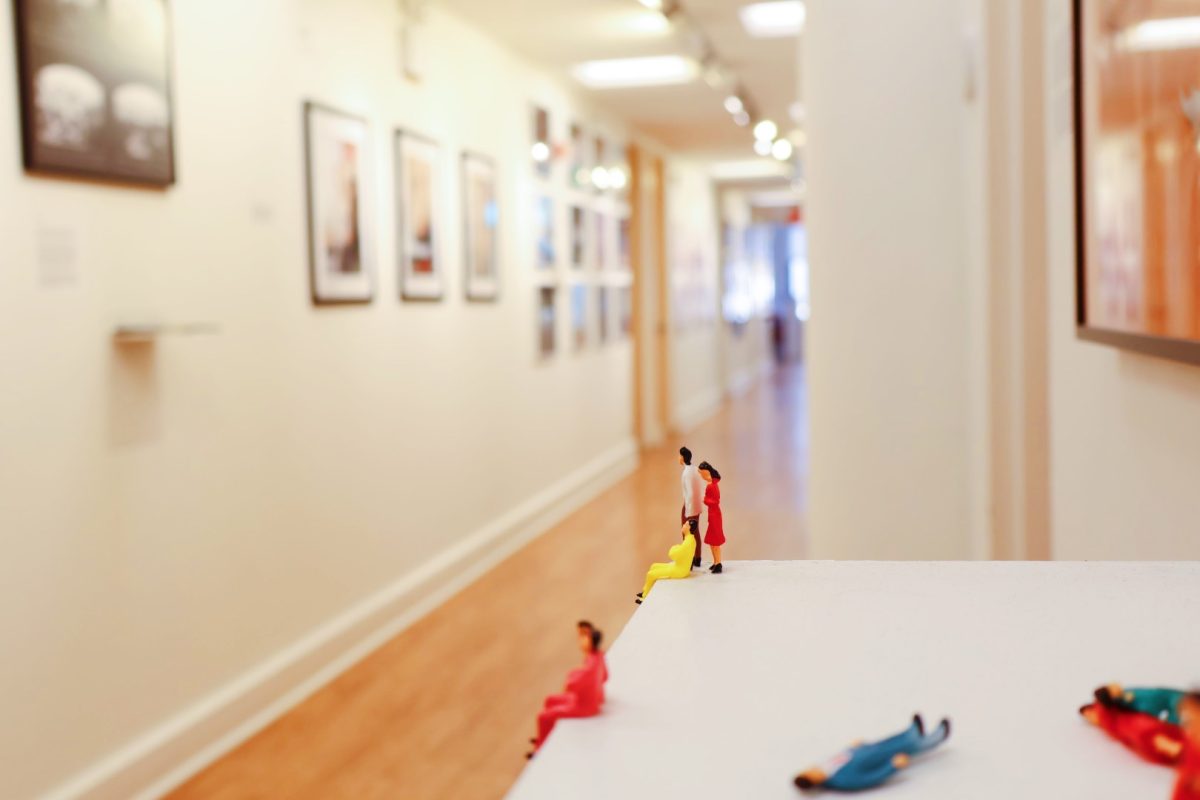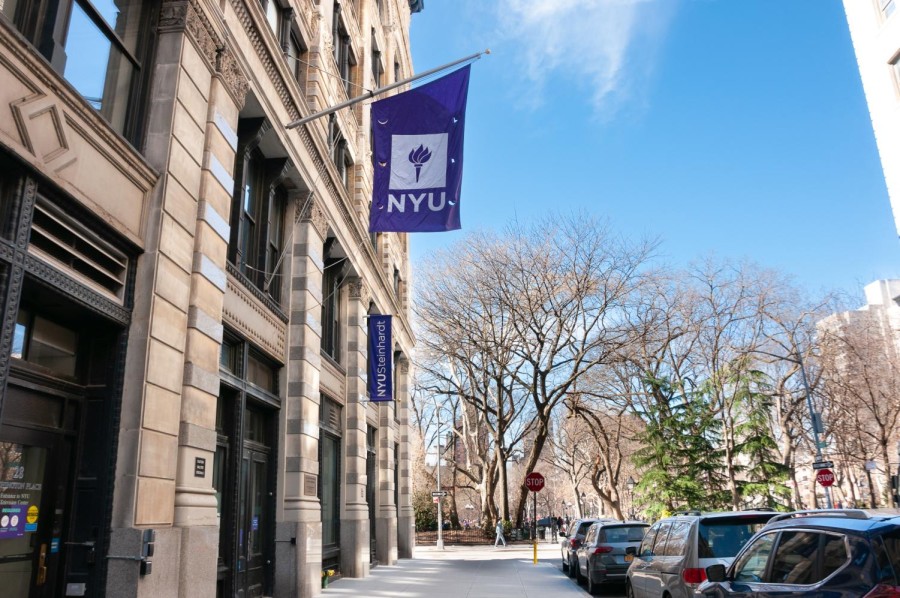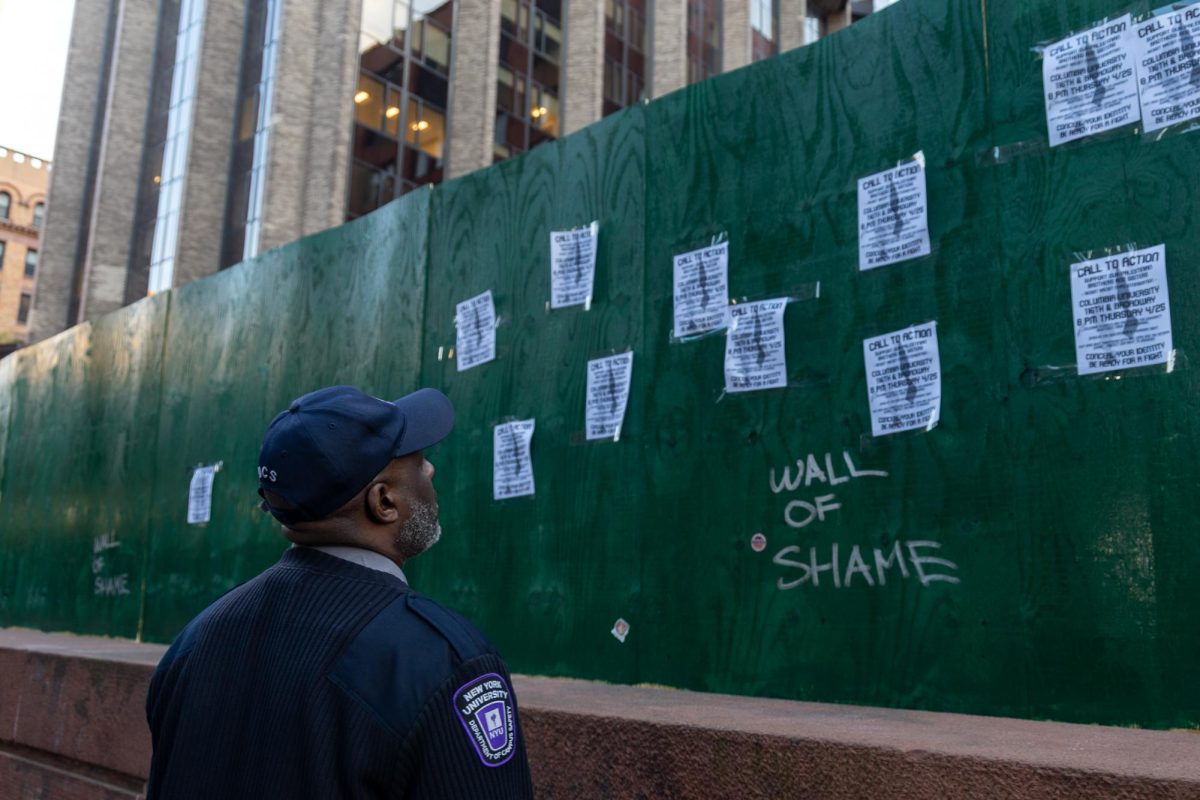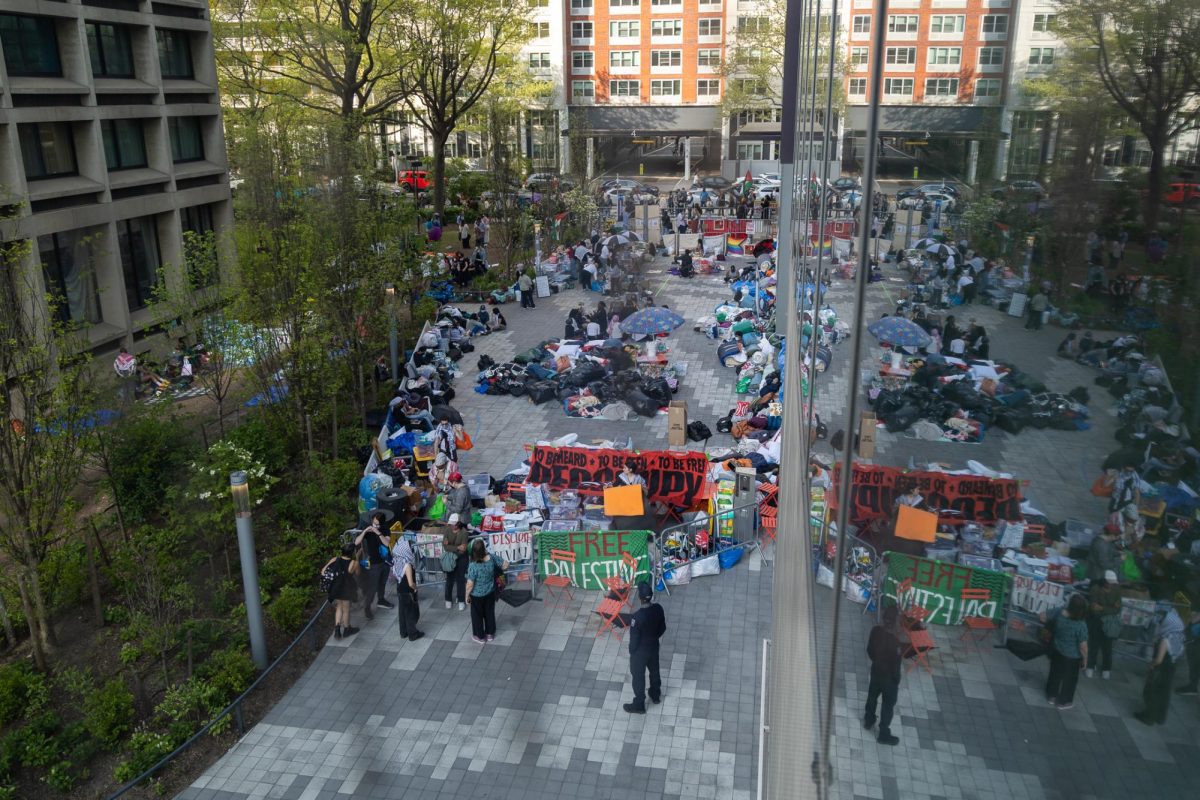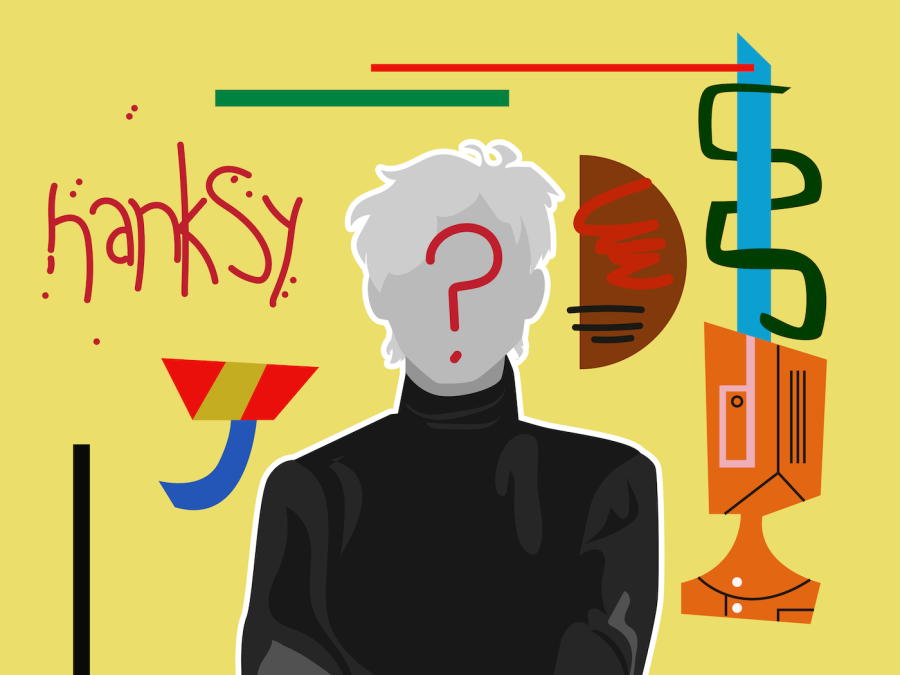The unexpected connection between Adam Himebauch, Adam Lucas and Hanksy
The mysterious Adam Lucas Himebauch might seem like a 1970s visionary and prolific artist from the early ’70s, but he turns out to be much more.
Adam Himebauch, also known as Adam Lucas and Hanksy, is a mysterious artist working in and out of the Lower East Side. (Illustration by Susan Behrends Valenzuela)
December 12, 2022
Within the lower level of the Essex Market, there is a display of photographs of Adam Himebauch that explain his history as a prolific artist who lived and worked in the 1970s. Intrigued by these photos, I searched for Himebauch online and found very little.
I browsed Instagram and found @adamhimebauchllc but all the posts were in the third-person. There were strange inconsistencies in the photos — a person in a mask and a puffer jacket in the back of a photo supposedly from the ’70s, a documentary that was never released and a museum that does not exist. Himebauch seemed less and less believable, yet more and more intriguing.
While the account convinced me at first, it became increasingly unclear. Collaborations with artists such as Mariana Oushiro were outdated, and Himebauch seemed to be connected to Hanksy, also known as Adam Lucas.
Adam Lucas moved to the Lower East Side from Wisconsin in 2011 to pursue art. His art is filled with color and vibrancy, mostly consisting of large murals around the city. However, Lucas is mostly known through his pseudonym Hanksy. The name is a pun referring to Hansky’s practice of putting Tom Hanks’ face on Banksy’s artwork. Hanksy’s work consists of street puns and satire; in general, he wanted to make art that would produce a reaction, whether that be disgust or laughter. In his prime, Hanksy took the Lower East Side by storm, gaining a cult following and attention from The New York Times, Rolling Stone and Insider.
Despite what I discovered about Hanksy and Lucas, Himebauch still did not fit into the picture. In a final fury of frustration, I messaged someone who had visited a supposed Himebauch gallery, and then everything fit together. Adam Himebauch, Adam Lucas, and Hanksy are all the same person.
The fake Adam Himebauch is part of Lucas’s performance art, titled “Back to the Future,” in which Lucas embodies the persona of an artist from the 1970s, using his own full name Adam Lucas Himebauch. Using social media to convince the audience, Lucas created a fake account and backed it up with staged art installations, photoshopped brand collaborations, a book and even a fake documentary. The artist went so far as to create a fake New York City art museum, called the New York City Museum of Contemporary Art, and an accompanying Instagram account.
Himebauch’s art, though a parody, is also a visually pleasing experience and an important reflection on modernity versus antiquity. Himebauch’s exhibition, titled “Retrospective” is displayed at Trotter&Sholer on Suffolk Street in the LES and will be up until Dec. 17. The prices of his pieces range from $5,000 to over $9,000. The exhibition is the final puzzle piece in his yearlong “Back to the Future” retrospective.
Himebauch’s project reveals the hypocrisy surrounding the value of art, with it oftentimes being valued because of the productivity of its creator or the nostalgia it induces, not the impact of the work itself. Visiting the art in person, the collection is a physical connection to symbolic performance. The paintings are mostly monotone with long pathways, hills and trees. Some include small houses. Staring into them, I felt like I was walking down the paths, heading into an unknown future, or, perhaps, looking back into the past.
Himebauch forces people to ask themselves if they would still appreciate art if it was made by someone deemed unimportant. The project also reveals the naivete of people on the internet — people often take things at face value rather than doing their own research. Had I not cared enough to research Himebauch, I would have been easily fooled by the fake persona. It was only when I took the time to research the artist that the whole scheme unraveled. I was fooled by Himebauch, and for that, I now respect the intricacies of his work and his devotion to scamming the art world.
Contact Alia Arafeh at [email protected].







